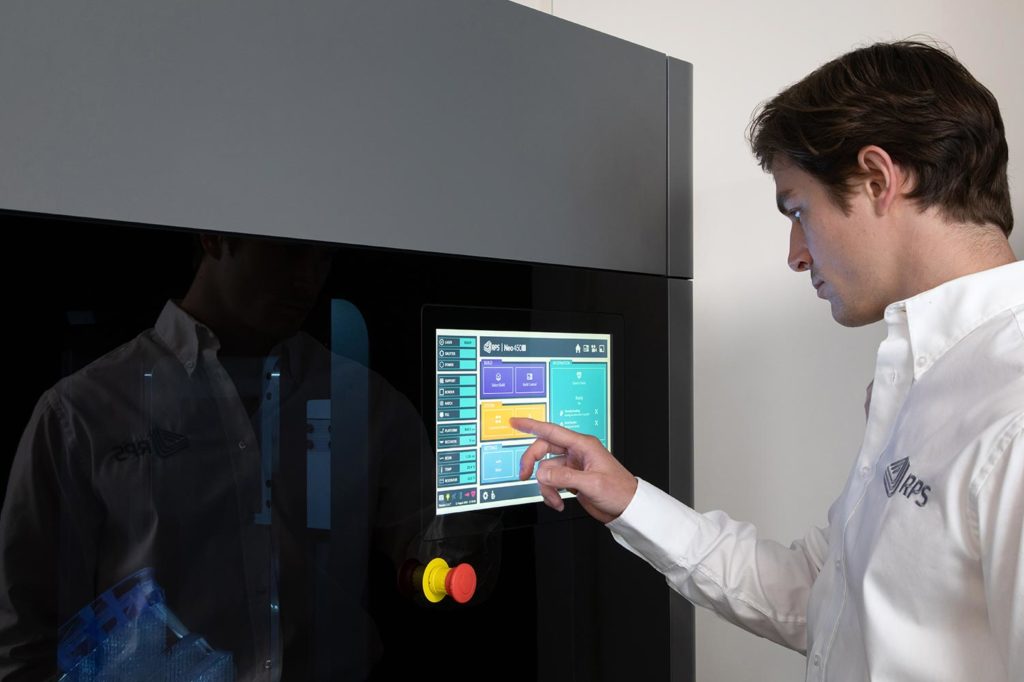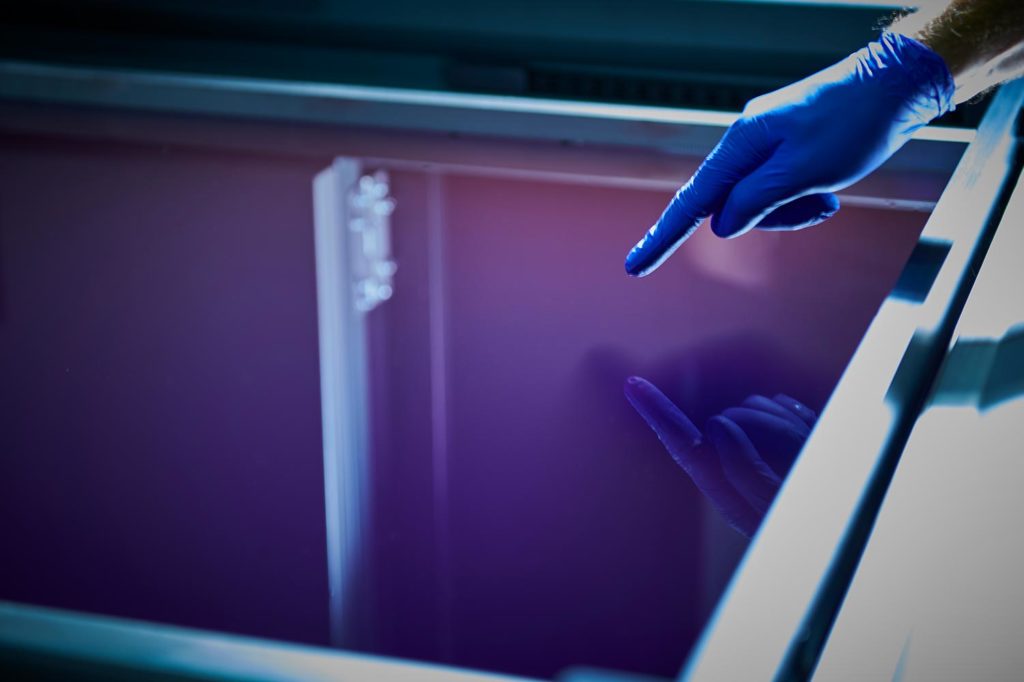U.K.-based RPS is a manufacturer of industrial stereolithography (SLA) machines. The company has traditionally done a lot of manufacturing for the Formula 1 industry, which is largely based in the U.K. Having already established itself with the large-scale Neo800 SLA 3D printer, the company has now introduced the Neo450 series.
RPS now offers the Neo450e and the Neo450s systems, which feature build volumes of 450 × 450 × 400 mm, with the Neo450e being the affordable variant with the Neo450s being more expensive and 40% faster. This compares to the Neo800, a 800 × 800 × 600 mm build volume system with a High Definition build mode, a more powerful laser, and dynamic scanning system.
The company says that the systems are for “prototypes, rapid tooling, and master patterns with exceptional surface quality, accuracy and detail” and touts “accuracy and repeatability” and “dependable and reliable” as key qualities. Both systems are open and compatible with the many 355 nm that the industry has on offer. If you’ve heard of RPS, then it’s probably due to the parts printed for the BAC Mono or their recent US expansion.

David Storey, Director of RPS, said, “The Neo is a technically advanced product packed with great benefits and features, and significantly raises the bar and expectations within the field of SL printing. We developed the Neo 3D printer to drive forward and transform the expectations of stereolithography. Thankfully, gone are the days of hand-finishing poor quality parts from fragile materials. Neo printed parts rival both the quality and accuracy of injection moulded parts directly from the printer.” With the Neo450 series, we wanted to design and develop a reliable, versatile machine that offered customers more functionality. With the Neo450e, customers can produce complex industrial-grade quality parts from an affordable 3D printer. With the Neo450s, customers can now quickly produce small to medium parts in SD or build intricate HD parts over the entire build area.”

The company claims that their improved scanning resolution can reduce finishing time by half, that its Titanium software is intuitive and easy to use, and captures all build information for the user including that needed for part traceability. Titanium can also be expanded through Titanium assistant to network the printer or printers. It lets you slice and plan builds, estimate build times and works with the on board camera.
Traditionally RPS machines have been reliable and made for users. The company got its start servicing SLA systems, which gives them a deep knowledge and understanding of SLA in a production environment. It’s good for the industry that we have a relatively small company that is versatile and agile making production SLA systems.
Through their open and practical approach, RPS will make other large players work harder to maintain their market share. Additionally, new entrants can’t just show up and wow people with buzz words, if existing manufacturing systems such as RPS’s are about. Long a mainstay in F1, the valuable collective experience wrapped up in these systems is considerable. The company also pushes out the boat in automotive, doing work such as headlight prototypes and a lot of wind tunnel testing parts.

To me, open SLA players, such as those from Origi and RPS, are absolutely essential to the future of SLA as a technology. They enable manufacturing companies to have a redundant supply chain and use materials from multiple vendors in their systems. We can’t move toward manufacturing, if users are completely locked into one platform or one company.
Furthermore, when you use open materials you can speak directly to the materials manufacturing company. This means that the industry learns more quickly as a whole. Feedback from the frontlines is directly shared with the polymer scientists and chemists of the resin companies and doesn’t go through some convoluted Chinese whispers game before ending up at some business development person’s desk in muddled form.
Open machines also let materials companies experiment more with newer formulas by making the settings of the machines available and alterable by these firms. This lets them tweak and make available many more parameters for their users. For example, the now-killed Autodesk Ember printer was found in many materials research labs because it was an affordable, open system that they could hack. Also, open systems let universities and researchers generally poke more into the guts of the machine and perform more innovative and out-there research. New entrants to the material market are also encouraged by open systems because it means that they will not have to be dependent on one or two players in the industry. Open systems de-risk the market as a whole and drive innovation.
Subscribe to Our Email Newsletter
Stay up-to-date on all the latest news from the 3D printing industry and receive information and offers from third party vendors.
Print Services
Upload your 3D Models and get them printed quickly and efficiently.
You May Also Like
3D Printing News Briefs, July 2, 2025: Copper Alloys, Defense Manufacturing, & More
We’re starting off with metals in today’s 3D Printing News Briefs, as Farsoon has unveiled a large-scale AM solution for copper alloys, and Meltio used its wire-laser metal solution to...
3DPOD 260: John Hart on VulcanForms, MIT, Desktop Metal and More
John Hart is a Professor at MIT; he´s also the director of the Laboratory for Manufacturing and Productivity as well as the director of the Center for Advanced Production Technologies....
3D Printing News Briefs, June 28, 2025: Defense Accelerator, Surgical Models, & More
In this weekend’s 3D Printing News Briefs, 3YOURMIND was selected to join an EU Defense Accelerator, and PTC has announced model-based definition (MBD) capabilities within Onshape. Finally, a study out...
EOS in India: AM’s Rising Star
EOS is doubling down on India. With a growing base of aerospace startups, new government policies, and a massive engineering workforce, India is quickly becoming one of the most important...

































